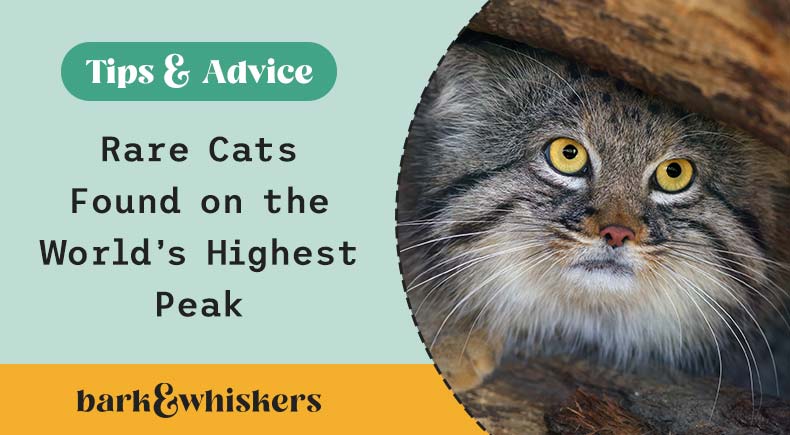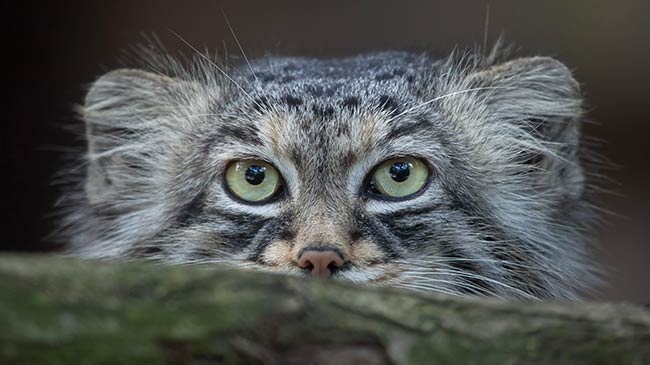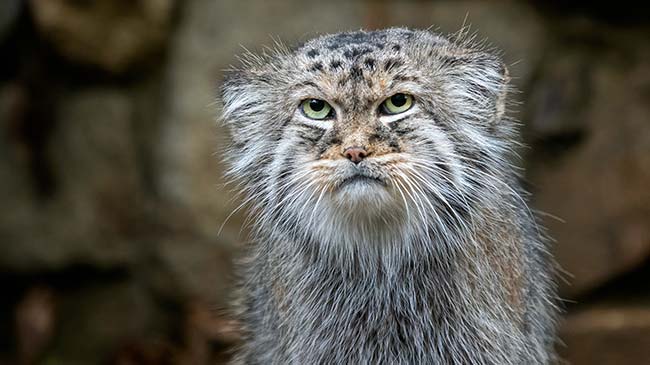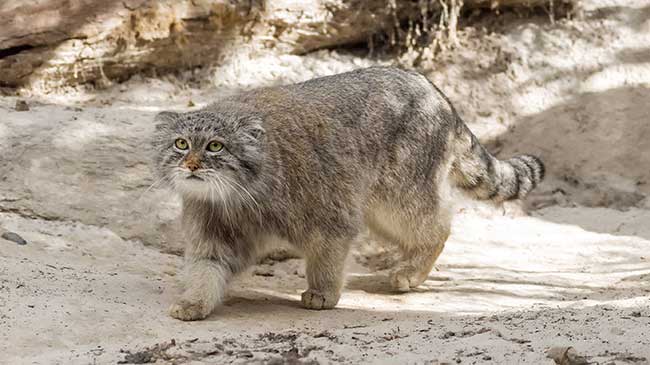Incredibly Photogenic Cats Living on the Top of the World?
The recent discovery of these long-haired felines - about the size of small, domesticated housecats - living on the world's highest peak has created a buzz in the research community after an exhaustive, yet rewarding, four-week journey. Find out how they learned the origin of these cats and more.

STORY AT-A-GLANCE
- Pallas’s cat is a rarely seen small wildcat about the size of a housecat, and scientists have recently discovered at least two of them on Mount Everest, extending the known range of the species to eastern Nepal
- Interestingly, the existence of Pallas’s cats on Mount Everest went completely undetected until the 2019 expedition during which scat samples were collected
- The research team confirmed the existence of the cats through scat samples collected at about 17,000 feet above sea level; the samples showed the cats were dining on pikas and weasels
In spring 2019, a team of scientists from the Perpetual Planet Everest Expedition biology field team led by Dr. Tracie Seimon of the Wildlife Conservation Society’s Zoological Health Program made a fascinating discovery. In a new paper published in Cat News, the team revealed the first ever report of the remarkable Pallas’s cat on Mount Everest.1

"It is phenomenal to discover proof of this rare and remarkable species at the top of the world," said Seimon. "The nearly four-week journey was extremely rewarding not just for our team but for the larger scientific community. The discovery of Pallas's cat on Everest illuminates the rich biodiversity of this remote high-alpine ecosystem and extends the known range of this species to eastern Nepal."2
Scat Samples Point to the Presence of Two Pallas’s Cats
The scientists collected environmental (scat, aka feces) samples from two locations 3.7 miles (6 km) apart at 16,765 feet (5,110 m) and 17,027 feet (5,190 m) above sea level along in the Sagarmatha National Park in Nepal on Mount Everest’s Southern Flank.
A DNA analysis of the samples collected from both sites confirmed that two Pallas’s cats live on Mount Everest and share territory with the red fox. The scat contained the DNA of pika (a small, mountain-dwelling animal) and mountain weasel, both of which are food sources for Pallas’s cats.
These findings add a new species to the list of known mammals in Sagarmatha National Park, a heavily visited and protected World Heritage site.
The number of tourists to both Mount Everest and the national park has increased dramatically over the last 50 years, from just a few thousand in the 1970s to over 50,000 in 2019. Yet during all that time, the Pallas’s cat went undetected until 2019, which according to the research team demonstrates the importance of conservation genetics and environmental sampling in discovering obscure, elusive species.
Future research will use camera trap surveys and additional scat samples in Sagarmatha National Park to help determine the Pallas’s cat population, range, density, and diet.
The Original Grumpy Cat?
According to CNET.com:
“Pallas's cat might not have the name recognition of a lion or tiger, but it's an incredibly photogenic animal. The cats are about the size of small domesticated felines and have rounded ears, stocky bodies and a perpetually grumpy expression. They are adapted to cold conditions in Asia.”3
While I agree these wildcats are incredibly photogenic, I’m not sold on the “perpetually grumpy” thing. Whereas the dearly departed domestic feline Tardar Sauce, aka Grumpy Cat, earned her nickname thanks in large part to her turned down mouth, Pallas’s cat has low-set ears, high-set eyes, and a broad forehead, giving him more of a “don’t mess with me” vibe.

I’d say his expression is entirely appropriate for a very small wildcat living among much larger predators at the world’s highest peak!
The 4-1-1 on Pallas’s Cats
Pallas’s cat (aka Steppe Cat, or Manul) is a small, long-haired feline that lives primarily in the deserts and rocky, mountainous regions from Tibet to Siberia. Notice how well their coat color blends into their natural terrain:

This small wildcat was named for German naturalist Peter Simon Pallas, who first observed the animal in the vicinity of Lake Baikal in Russia in 1776.4 It inhabits a large region in Central Asia in widely spaced sites from the Caucasus, Iranian Plateau, Hindu Kush, parts of the Himalayas, Tibetan Plateau to the Altai-Sayan region and South Siberian Mountains. The cats prefer rocky montane grasslands and shrublands, where the snow cover is below 6 to 8 inches.5
The Pallas’s cat is about the size of a housecat, with soft fur that is pale silvery gray or light brown in color. The end of the tail is ringed and has a black tip, and some cats have indistinct, dark markings on their bodies. The fur covering the underside of their bodies is about twice as long as the fur on the upperparts, which seems to be an adaptation designed to protect the cats as they lay and crouch on the cold ground.
The length of Pallas’s cats ranges from 18 to 24 inches, plus another 9 to 12 inches of tail. They weigh from 5.5 to 7.7 pounds, so they’re actually slightly smaller than the average U.S. housecat, though their incredibly thick coats make them look larger. They generally live to be 8 or 9 years old.
The cats’ broad heads, high-set eyes, and low-set ears may be another adaptation, this one to aid them in peering over rocky ledges, exposing only a small part of themselves to small prey animals and birds.
The Pallas's cat is solitary and shelters in caves, rock crevices, and marmot burrows. According to Wikipedia, from June 2005 to October 2007, 29 of the cats in central Mongolia were tracked with radio collars and used 101 different dens during that period — some during the summer, others during the winter, and 20 exclusively for raising kittens.
Pallas’s cats prey on small mammals by stalking or ambushing them near the exits of burrows or pulling them out of shallow burrows with their paws. The list of prey remains that have been found near breeding burrows of the cats includes long-tailed ground squirrels, flat-skulled shrews, pikas, gerbils, silver voles, woolly hares, passerine birds, beetles, grasshoppers, and cypriniform fish.
Sources and References
Today's Pet Video:
Diligent Cats Play a Significant Role at Distilleries
Ireland and Scotland may be the first places frisky felines earned the role of distillery protectors due to their ability to catch the mice that might otherwise spoil the grains.











